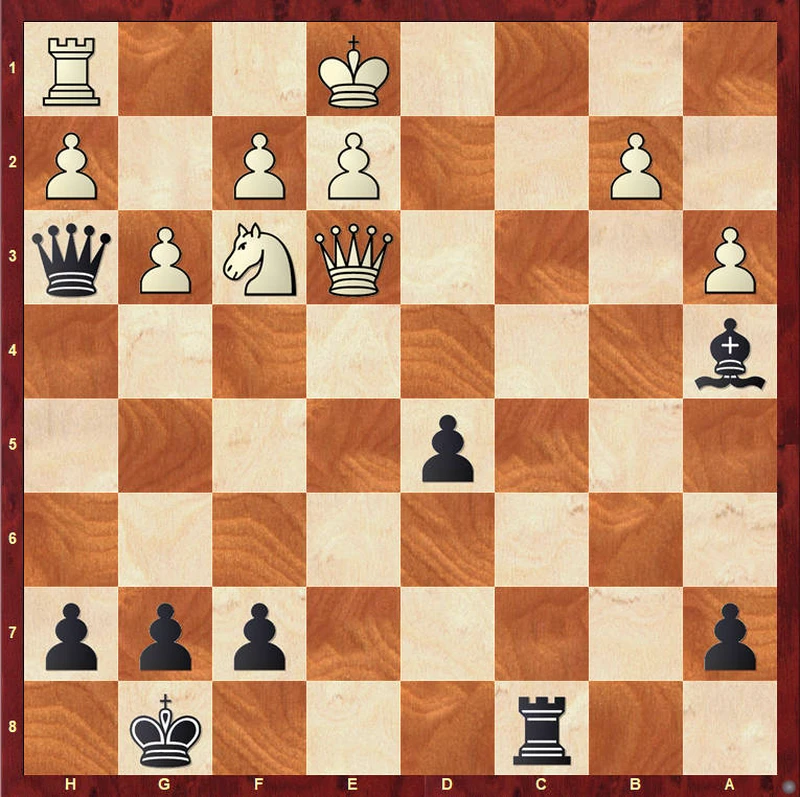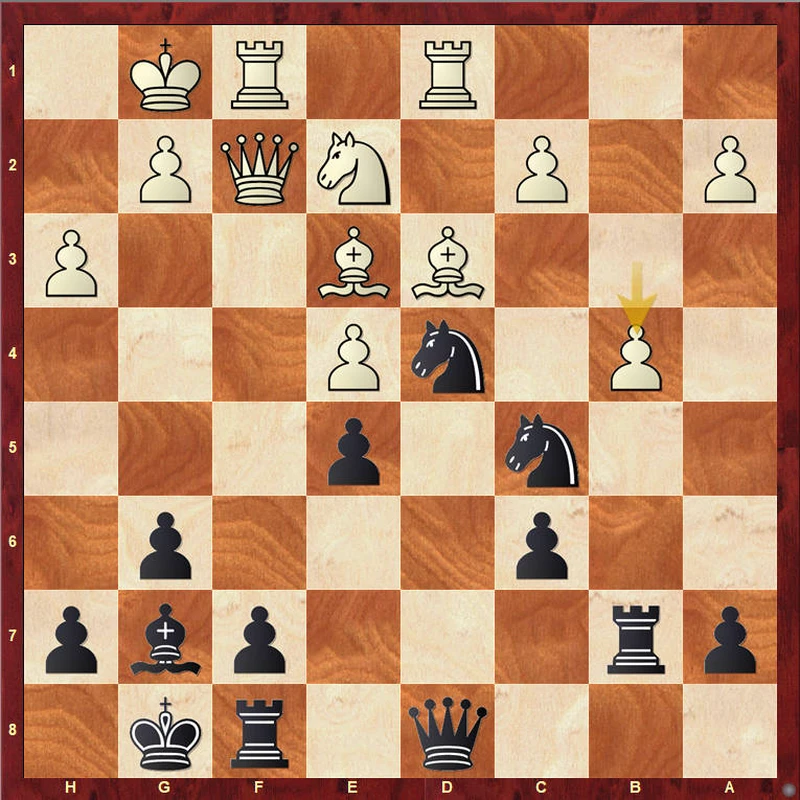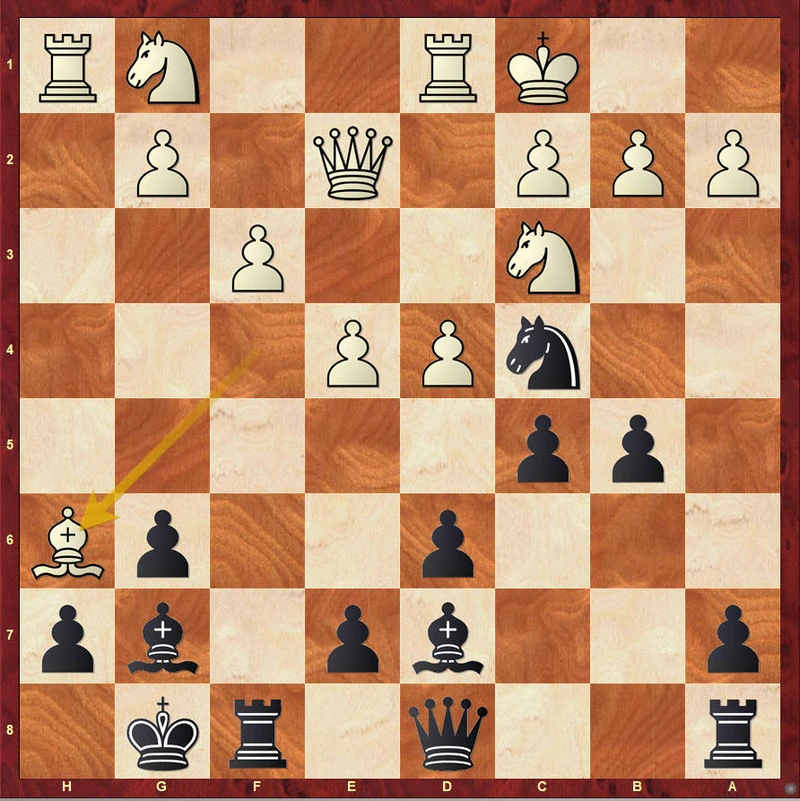
Effective training methods - calculation training
A post about improving your calculation skills.I started a series about effective training methods like a hundred years ago. Unfortunately, life got in the way, and I had no time to write posts recently.
Finally I have time again for writing, so let's continue with one of the most important training methods: calculation training.
The difference between tactics and calculation
Calculation is the bigger box which contains tactics.
That is, tactical training is a form of calculation training where you already know that there is a win, and the solution has a forcing and tactical nature.
Calculation in general is not always so. When you calculate something in a real game:
- You don't necessarily know the evaluation of the position beforehand, so you have to figure it out yourself. (You could be actually lost - and it might take a lot of calculation to discover that!)
- There is no guarantee that one of the tactical ideas or the forcing moves will work. (Sometimes you have to calculate a lot to discover that a promising sacrifice does not work.)
- Sometimes you don't even realise when it is time to calculate. You should learn to recognize the critical moments by yourself.
Let's see an example for a calculation exercise, where the "solution" might be disappointing for some people.

Akopian - Judit Polgar
In the position above, Black played 21. ... h6! - which is just an obvious positional improvement, opening the back rank.
Still, before playing that, Black surely checked all the forcing moves (21. ... Re8, 21. ... Rc2, 21. ... Qg2, and 21. ... d4), and rejected them for some reason.
After 21. ... h6, White has to bring his rook into the game and find a relatively safe spot for his king, so he could try one of the followings:
- 22. b3, with the idea of Ke1-d2 and Rh1-c1;
- 22. Rg1, with the idea of g3-g4 and Rg1-g3;
- 22. Nd4, with the idea of Ke1-d2 and Rh1-c1 again, or even f2-f3 and Ke1-f2.
We can be sure that Judit Polgar had checked all these possibilities and calculated something against them.
And this is how real life calculation tends to end - a lot of effort, but no fireworks. All we have is an ordinary-looking move which happens to be the best.
How good calculation looks like
Simply put, good calculation is structured. That is:
- You think in candidate moves. ("In this position I can play move A, B, C, and D.")
- When you calculate a certain candidate move, you make a list of your opponent's possible responses, and you check all of them. ("If I play move C, which looks the most promising, my opponent can respond with option 1, 2, and 3.")
- You close your lines with evaluations ("If he plays option 1, then I play that, he plays that, I play that... and I must be clearly better here.")
- If your evaluation contains some kind of reasoning, it is even better. ("I must be clearly better here, because even if he is a pawn up, his king is weak and I control the only open file.")
How to train your calculation skills
The good news is that every position complicated enough can serve as a calculation training puzzle, including endgames, studies, and middle game positions.
If you are a hobby player with limited time for chess, your best bet might be to combine calculation training with the study of model games for your opening repertoire.
That way you kill two birds with one stone, doing targeted calculation training for typical positions you can get in real games.
Say, you play the Pirc with Black, and you want to improve in that.
You can get a bunch of quality model games for the Pirc from online databases. (Preferably older games, they tend to be more approachable for the average mortal).
Then you hide the notation in the online database, so you never know what the next move is, and start to play through the game on a physical board.
Whenever you reach a position that looks complicated enough, you should stop and start to calculate - basically turning it into a calculation exercise.
When you are done with your calculation, don't forget to check the quality of your lines and evaluations by moving the pieces on the board, or using an engine.
A couple of examples
Let’s suppose again that you are playing through some Pirc games to improve your understanding of that opening. (We will suppose that, because this is what I am doing right now. :) )

Sarapu-Mecking
In the position above, White has just played 18. b4. This is not a tactical puzzle, so you don’t know how good that move is. You could be lazy and trust your opponent, believing him that the b4-pawn is poisoned - but as you check the next move, you see that Mecking actually took the pawn with 18. ... Rxb4.
So, White apparently thought the pawn was poisoned, and Black apparently thought it was not.
Who was right? Well, this is the perfect moment to do some calculation training, and discover your inner Mecking. :)
Another one.

Grabczewski-Smyslov
White has just played 15. Bh6. Again, you don’t know how good it is, and what Smyslov’s next move was, but the position is sharp and interesting - a good opportunity to strengthen your calculation muscles.
You have at least four interesting lines to calculate:
A) 15. ... Bxh6, as the white rook will be an unprotected piece on h6 - a potential target for tactics.
B) 15. ... Bxd4, sacrificing an exchange. The black pieces look very strong on d4 and c4.
C) 15. ... Qa5, with the idea of Qb4 next, creating a checkmate threat on b2.
D) 15. ... cxd4, which is forcing enough - we might find something interesting here.
Which one is the best? Are your line and evaluations correct?
If you can go deep enough in such positions, it is almost like playing tournament chess.
Final thoughts
I could give you more examples, but I think you get the point. If you have the right attitude and learn to enjoy calculation, you can turn many positions into calculation training, and you don't need any special resource for that.
Do not limit your calculation training to solving only tactical puzzles - there is really much more to it.
Remember, calculation is the most universally applicable skill in chess - if you get better at that, you can expect huge improvements in every phase of the game.
I hope you enjoyed the post. If you are looking for no-nonsense coaching with a professional coach, feel free to check my coaching profile here. If you are interested in working with me, please send me a message with a short introduction of yourself and we can discuss the details.
You may also like
 CM HGabor
CM HGaborHow to make your chess training effective
This is the first post of a series about effective chess training. In the following posts, I will di… CM HGabor
CM HGaborEffective training methods - doing tactics
My previous post was about chess training in general. We will dive into the details now. So, what yo… IM theScot
IM theScotLife Hacks for Getting to IM
A post about the life-skills that help you in chess. WFM fla2021
WFM fla2021The Four Knights Opening! Easy win for White Pieces
Check this line if you want to surprise your opponent as White pieces CM HGabor
CM HGaborThe truth about checks-captures-threats
Probably the most common advice you hear in chess is that you should always look for forcing moves (… CM HGabor
CM HGabor